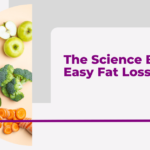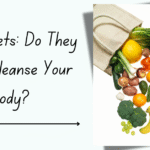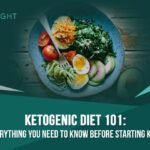Eating clean is one of the simplest yet most powerful ways to improve your health, energy, and overall well-being. But if you’re new to the concept, it can feel overwhelming.
This beginner’s guide to eating clean breaks down everything you need to know—what it means, its benefits, and how to get started—in a simple, actionable way.

What Does “Eating Clean” Mean?
Eating clean focuses on consuming whole, minimally processed foods that are as close to their natural state as possible. Key principles include:
✔ Choosing whole foods (fruits, veggies, lean proteins, whole grains)
✔ Avoiding processed foods (refined sugars, artificial additives, trans fats)
✔ Reading ingredient labels (fewer ingredients = cleaner food)
✔ Cooking at home more often (control what goes into your meals)
Benefits of Eating Clean
Switching to a clean eating lifestyle can lead to:
✅ More energy (no sugar crashes!)
✅ Better digestion (thanks to fiber-rich foods)
✅ Healthier weight management (fewer empty calories)
✅ Clearer skin (less processed junk = fewer breakouts)
✅ Stronger immune system (nutrient-dense foods support health)
How to Start Eating Clean (Simple Steps)
1. Stock Your Kitchen with Clean Staples
Fill your fridge and pantry with:
- Fresh produce (berries, leafy greens, carrots, apples)
- Lean proteins (chicken, fish, tofu, eggs)
- Whole grains (quinoa, brown rice, oats)
- Healthy fats (avocados, nuts, olive oil)
2. Cut Out Processed Foods Gradually
Instead of going cold turkey, slowly replace unhealthy choices:
- Swap soda → sparkling water with lemon
- Replace white bread → whole grain or sourdough
- Choose Greek yogurt → instead of flavored yogurt with added sugar
3. Meal Prep for Success
- Spend 1-2 hours per week prepping meals to avoid last-minute fast food.
- Cook simple recipes like grilled chicken with roasted veggies or overnight oats.
4. Stay Hydrated
- Drink half your body weight (lbs) in ounces of water daily.
- Herbal teas and infused water count too!
5. Read Labels Carefully
Avoid foods with:
- Added sugars (high-fructose corn syrup, sucrose)
- Artificial ingredients (preservatives, dyes)
- Trans fats (hydrogenated oils)
Sample Clean Eating Meal Plan
| Meal | Clean Eating Option |
|---|---|
| Breakfast | Oatmeal with berries + almond butter |
| Lunch | Grilled chicken salad with olive oil dressing |
| Snack | Apple slices + natural peanut butter |
| Dinner | Baked salmon + quinoa + steamed broccoli |
Common Clean Eating Mistakes to Avoid
❌ Thinking “clean” means “perfect” (It’s about progress, not perfection!)
❌ Over-restricting (Allow occasional treats in moderation)
❌ Ignoring portion sizes (Even healthy foods can lead to weight gain if overeaten)
Final Thoughts
Eating clean isn’t a diet—it’s a sustainable, long-term approach to nourishing your body with real, wholesome foods. Start small, stay consistent, and enjoy the benefits of feeling healthier and more energized!









